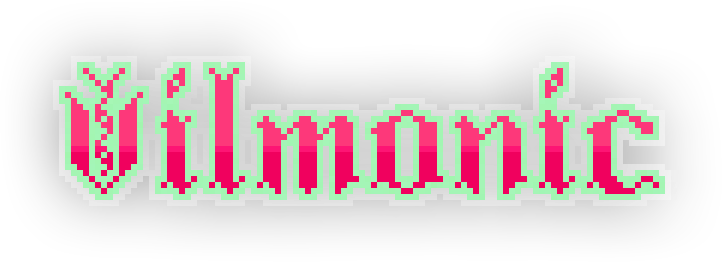
This is the English version, for the published Japanese version, read it here:
https://www.gamespark.jp/article/2018/11/18/85381.html
By SEKI
# Please introduce yourself.
My name is Mark Stramaglia, and I’m an experimental musician and digital artist. I usually create music and art under the name Wizard Master (http://www.wizardmaster.com) using my own custom sampling and sequencing software BackToBasics, WMCP, Abominaclavia, and others.
My music software has been written up in Wired Magazine, Computer Music Journal and Computer Music Magazine and won honorable mention at International Festival of Electroacoustic Music, Bourges, France.
# When and how did you start developing the game?
I wanted to create a game that focused on the world for its own sake. For many games, the environment is something to be passed through or exploited for personal gain. Vilmonic is about slowing down and enjoying life within that virtual world and taking an interest in its growth.
I started Vilmonic as a way of learning every aspect of game production, to create a game from scratch with as few off-the-shelf components as possible. The result is that Vilmonic is a self-funded and completely DIY endeavor. The game and palette-shifting animation engine, the GUI framework, the simulator, the graphics and design and marketing materials, all of it is created solely by me.
# What is/are interesting/unique in the game?
Vilmonic is a deep and complex artificial life simulator. The life forms in Vilmonic are truly living systems. This is from the point of view of the strong claim of artificial life, that computational systems can actually *be* living systems. I do not program in behaviors to the creatures, their actions are emergent based only on the very simple rules in their neural-net brains.
Each life form in Vilmonic is unique, with a morphology (the pixely shape & color) determined by its own genetic code. The morphology then controls the creature’s physiology and behavior. For instance, the ratio of outer to inner pixels in the body determines how much moisture that creature evaporates every metabolic cycle. So the pixel art of each creature is actually an important part of the mechanics of the game.
The rules for genetics and evolution adhere very faithfully to the principles of natural selection. Evolution has no direction in this world. You will *not* evolve humans in Vilmonic, but you will evolve life with surprising survival traits that are determined by the environment.
At the same time, Vilmonic is whimsical and cute and mellow. You can craft many items and building materials. You can terraform the world and build houses and roads. You can explore and dig up treasure (or junk!) and you can try to coexist with the selfish zombitons who you share the world with.
# Is the game inspired by any other games/movies/etc.?
Vilmonic’s sense of whimsy is inspired by artists like Rodney Alan Greenblat (Dazzeloids) and Keita Takahashi & Anna Pickard (Glitch). And emergence and and generative art from Vera Molnár, Brian Eno, John Cage. And biology and artificial life inspirations come from Richard Dawkins and Lynn Margulis, as well as projects like Conway’s Game of Life, Creatures, and Tierra!
# (If not yet) Do you have a plan to support the Japanese language?
I would love to support a Japanese language version, and I plan to support as many languages as I can. Japanese is at the top of my list, I just don’t know any Japanese translators!
# Please give us a message for Japanese gamers.
Please join in the discussions on the Discord and Steam communities! And reach out and contact me with any questions you have, whether it’s about artificial life or art or music or game design.
Vilmonic is far more complex than it seems on the surface, so it will take some time and scientific thinking to uncover many of the secrets in the game.
–Thank you very much.

